Japan’s one of the most exciting places you can visit right now—and a big part of that is how different it feels from pretty much anywhere else. It’s modern, traditional, super high-tech, incredibly polite… all at once.
But with that uniqueness comes a bunch of things that might totally clash with what you’re used to back home.
There are just some things you don’t do in Japan—like walking while eating, or chatting loudly on your phone. It’s not about being super strict or formal, but there are unspoken rules that locals really appreciate tourists following.
This isn’t a lecture. Just a friendly heads-up on the little things you don’t do that’ll help you fit in, avoid awkward moments, and show a bit of respect while exploring one of the coolest places on Earth.
Cultural Etiquette Mistakes
Don’t wear shoes indoors
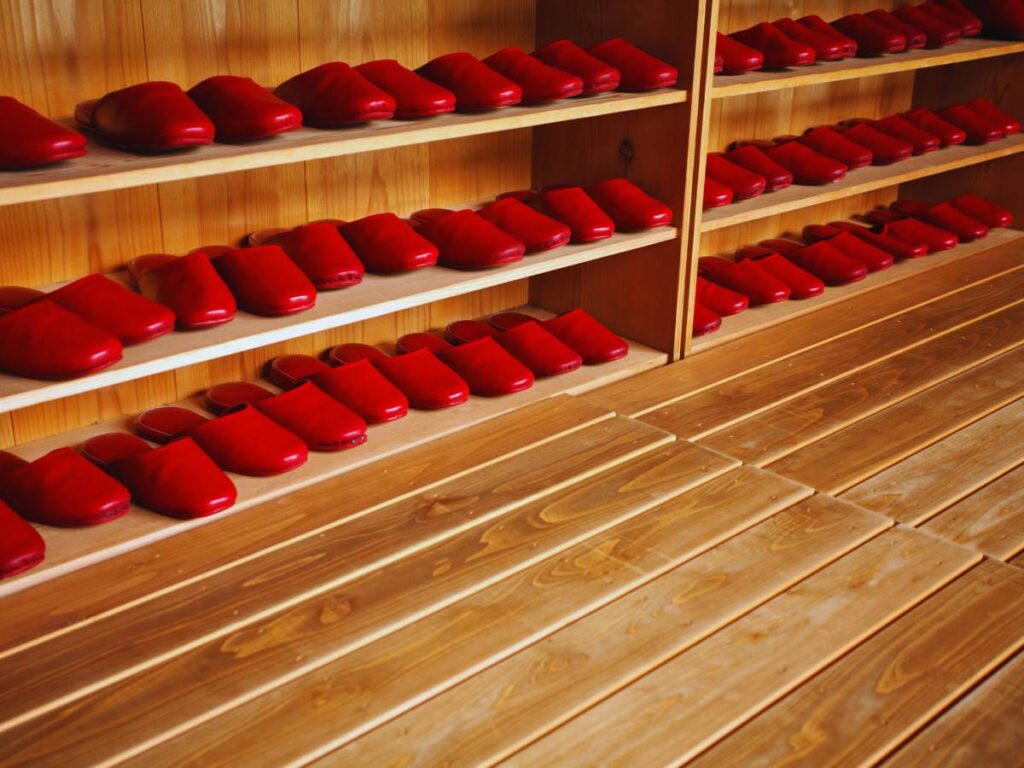
Taking off your shoes when entering a home or traditional space in Japan isn’t just a nice gesture—it’s expected. Cleanliness is a big deal here, and wearing shoes indoors is seen as bringing the outside dirt in.
You’ll often see a small area by the entrance called a genkan, where you’re meant to leave your shoes and switch into slippers. This rule also applies in temples, some traditional restaurants, and ryokan (Japanese inns).
If in doubt, just look around—if you see a line of shoes by the door, it’s your cue to follow suit.
Don’t point at people or objects
Pointing with your finger might seem like the easiest way to show where something is or who you’re talking about, but in Japan, it comes off as rude or overly aggressive. Instead, people usually gesture with an open hand or a small nod. It’s all about being subtle and respectful.
So if you’re trying to ask where the nearest station is or show something to a friend, go easy on the hand gestures—less is more.
Don’t speak loudly in public

You’ll notice it pretty quickly—Japanese public spaces are surprisingly quiet. Even in big cities, people tend to keep their voices low, especially on trains or buses. Loud talking, laughing, or taking phone calls in these spaces can make you stand out in the wrong way.
It’s not that locals are unfriendly—they’re just super mindful of the people around them. Keeping your voice down is a simple way to show respect and blend in a bit more.
Don’t eat while walking (unless you’re in a street food area)

Japan has amazing snacks everywhere—from konbini treats to freshly grilled skewers—but eating on the go is generally frowned upon. It’s seen as messy, distracting, and a bit inconsiderate, especially if you’re walking through crowded areas or public transport.
That said, there are exceptions—at festivals (matsuri), shotengai (shopping streets), or designated food stall zones, walking while eating is totally fine and even expected.
Just pay attention to the setting, and if it’s not obviously a street food vibe, find a spot to stop and enjoy your bite.
Don’t blow your nose in public
It might seem like a minor thing, but blowing your nose loudly in public is considered pretty gross in Japan. People usually try to sniffle quietly until they can excuse themselves to a restroom or a private spot.
If you’re dealing with allergies or a cold while travelling, pack tissues and step aside when you need to deal with it. Wiping your nose discreetly is okay—just avoid making a scene.
Don’t tip (most of the time)

Tipping isn’t part of the culture in Japan, and most of the time, it just confuses things. You could leave a tip and find the server chasing after you to return it, thinking you left money behind by accident.
But again, there are some exceptions. If you’ve hired a private guide, had a great driver, or see a clearly marked tip jar at a cafe, a small gesture of thanks is fine. Just keep it low-key and don’t make a big deal out of it.
Don’t open or close taxi doors yourself
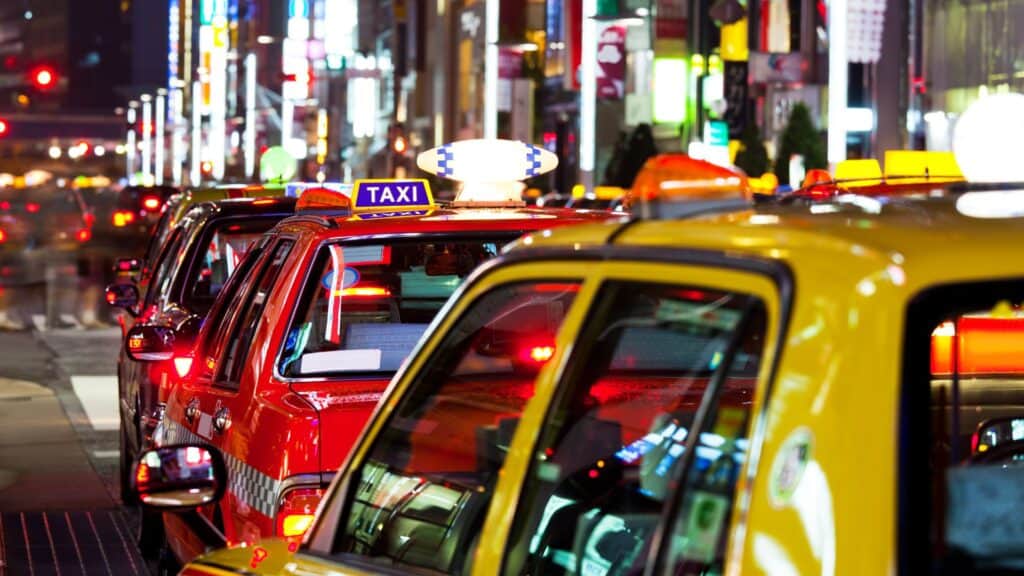
One of the cool little quirks in Japan is that taxi doors open and close automatically—controlled by the driver. It’s part of the service, and reaching for the door yourself can throw the driver off or even come across as rude.
Just wait, hop in when it opens, and let the driver handle it. It’s a small touch, but it’s one of those things that makes Japan feel extra polished and polite.
Chopstick Etiquette Mistakes
Don’t stick chopsticks upright into rice
This is a huge no-no. Sticking chopsticks straight up in a bowl of rice is something that’s only done at funerals as an offering to the dead. It’s a strong cultural symbol and can really put people off their meal. Just lay them down neatly on the chopstick rest or across your bowl when you’re not using them.
Don’t pass food chopstick-to-chopstick
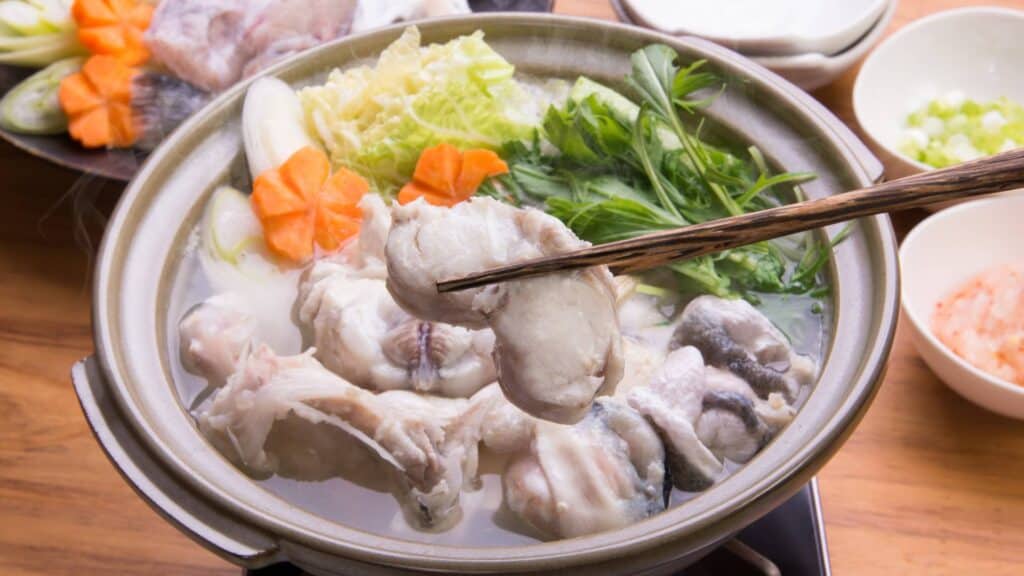
Passing food directly from your chopsticks to someone else’s mimics a funeral ritual involving bones after cremation—yep, it’s that serious. If you’re sharing food, it’s better to place it on their plate or use serving chopsticks if they’re available. It’s a small thing, but it shows respect.
Don’t rub disposable chopsticks together
You might be used to doing this to remove splinters, but in Japan, it can come off as an insult. Rubbing your chopsticks together signals that you think they’re cheap or low quality. Unless you’re actually getting poked by a splinter (which is rare), just split them cleanly and use them as-is.
Don’t point with chopsticks
Pointing at people or things with your chopsticks is seen as rude—same vibe as pointing with your finger, but maybe even worse when it’s with eating utensils. If you need to gesture at something, do it with your hand instead, or say it out loud. Keep the chopsticks for the food!
Don’t hover over dishes indecisively
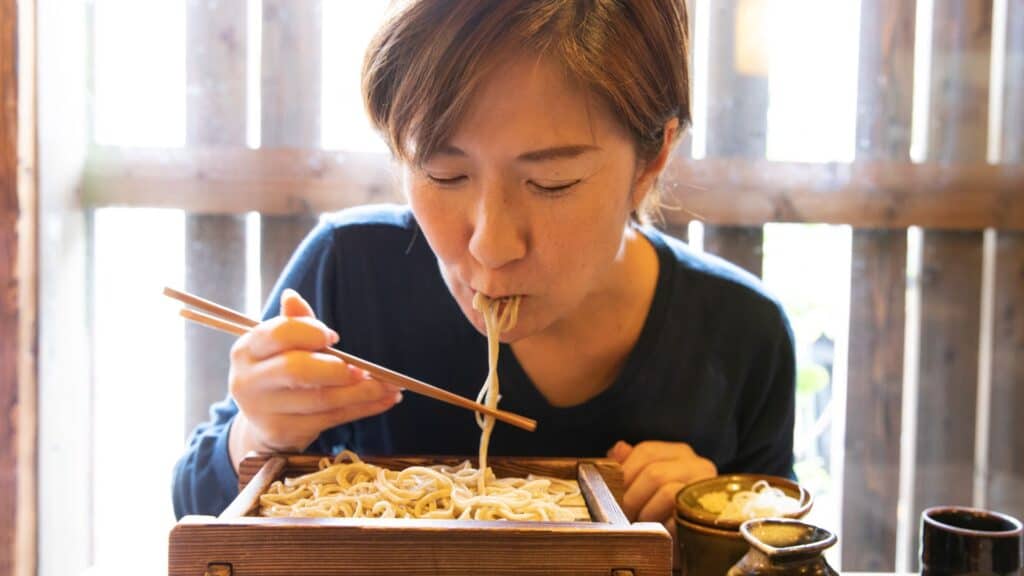
You know that thing where you wave your chopsticks over the table trying to decide what to grab next? Try to avoid it. It looks indecisive and can make people feel awkward, especially with shared dishes. Best move? Decide before you reach in, then go for it confidently.
Don’t stab food with chopsticks
Unless you’re dealing with something super slippery like a rogue edamame or a bit of mushroom that just won’t cooperate, stabbing your food is generally frowned upon. It’s seen as childish or impolite—kind of like playing with your food. If you can’t pick it up properly, it’s okay to use a spoon or fork when available.
Don’t lick or suck on your chopsticks
Even if they’re covered in delicious sauce, resist the urge to lick your chopsticks clean. It’s seen as unhygienic and kind of gross. Instead, use your rice or another bite to clean them off naturally. Keep things classy—even if you’re just really into that tare sauce.
Don’t use chopsticks to pull dishes toward you
Dragging a bowl or plate closer using your chopsticks might feel efficient, but it’s not polite. Use your hands to move dishes instead. Chopsticks are for eating, not rearranging the table. Plus, it lowers the risk of spills or knocking things over.
Don’t cross your chopsticks when placing them down

Crossed chopsticks on the table can look messy or, in some cases, resemble a symbol of death. Instead, place them neatly on a chopstick rest (hashioki) or straight across your bowl or plate. It’s just a small bit of tidiness that shows good manners.
Don’t tap or drum with your chopsticks
Tapping your chopsticks on the table, your bowl, or even just drumming along to a song in your head might feel harmless—but it’s considered childish and disrespectful. Especially in more formal settings, it’s a good idea to keep your chopsticks still unless they’re in use.
Don’t play with your chopsticks
Spinning, waving, twirling—whatever your fidget habit is, leave the chopsticks out of it. Playing with them makes you look inattentive and immature, and in some cases, a bit rude. If you’re waiting for food, maybe just take in the atmosphere instead of turning your chopsticks into toys.
Don’t dig around in shared dishes
If you’re eating family-style and everyone’s sharing, avoid fishing through the dish with your chopsticks trying to find the “best” piece. It’s considered bad form. Just take what’s on top and keep it simple. If you’re offered seconds, then sure—go back for your favourite.
Onsen (Hot Spring) Etiquette Mistakes
Don’t enter without washing thoroughly first

Before you even think about getting into the onsen, you’ve got to scrub yourself clean. Use the showers or stools provided and give yourself a proper wash—soap, rinse, the works. The onsen water is meant to stay clean for everyone, so skipping this step isn’t just bad manners, it’s genuinely gross.
Don’t wear swimsuits or towels in the water
Onsens are enjoyed completely nude—yep, no swimsuits, no towels, nothing. It might feel awkward the first time, but it’s totally normal in Japan. Everyone’s there to relax, not stare. Just bring a small towel for modesty outside the bath, but don’t take it into the water (more on that next).
Don’t dip your head underwater

Keeping your head above water is an unspoken rule. It’s all about hygiene—nobody wants hair or faces going under where everyone else is soaking. If you’ve got long hair, tie it up so it doesn’t trail in the water. And save the underwater zen moments for a regular bath back at your hotel.
Don’t bring phones or cameras into the bathing area
Privacy is a big deal in onsens. The bath area is meant to be a calm, personal space—not a place for selfies or checking your texts. Phones and cameras are completely off-limits, so leave them in the locker room and just enjoy the moment.
Don’t jump, splash, or swim
Onsens aren’t pools—they’re more like peaceful sanctuaries. Splashing around, swimming laps, or making noise totally ruins the vibe. Keep your movements slow, quiet, and chill. You’re there to relax, not start a water fight.
Don’t enter with visible tattoos (unless it’s clearly allowed)

Some onsens still have rules against tattoos due to their historical links with organised crime. Even small, cute tattoos might not be accepted.
That said, things are slowly changing—some places now allow tattoos or offer cover-up patches or private baths. Check their website or ask in advance so you don’t get turned away.
Don’t let your towel touch the bath water
You’ll usually bring a small towel with you for modesty and to wash up, but once you’re in the bath, it shouldn’t go in the water. People usually fold it neatly and place it on their head or on the side of the bath. Letting it float around is considered unhygienic and kind of lazy-looking.
Don’t stay in too long
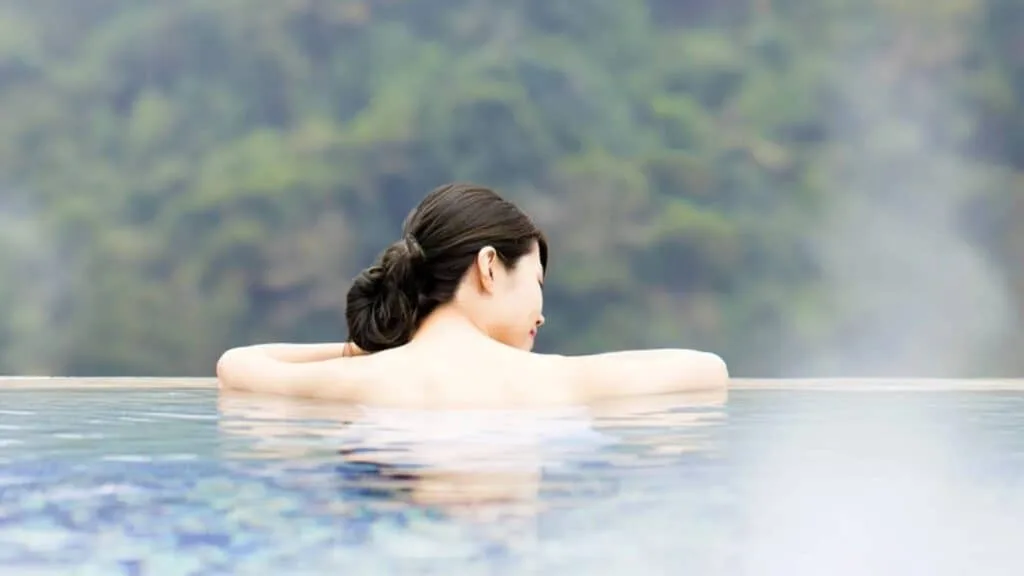
The water in onsens can be hot—like, properly steamy. Sitting in it too long might leave you light-headed or dizzy. Take breaks if you need to, and don’t feel like you have to tough it out. Most people soak for a bit, cool off, then hop back in. Listen to your body.
Temple & Shrine Etiquette Mistakes
Don’t walk in the centre of shrine paths (sando)

The main path leading up to a Shinto shrine—the sando—has a middle section that’s meant for the gods, not for visitors. Locals usually walk to the side as a sign of respect. It’s a small detail that says a lot, so if you’re heading toward a shrine, stick to the edges and let the centre stay sacred. On this note, before entering the shrines, locals also bow in front of the torii.
Don’t take photos where signs forbid it
Temples and shrines can be incredibly photogenic, but they’re not tourist props—they’re sacred spaces. If you see a no-photography sign, put the camera or phone away, even if it’s the perfect shot. Some areas are meant to be experienced quietly, without a lens between you and the moment.
Don’t throw coins aggressively

Offering coins at a shrine is part of a prayer ritual—not a carnival game. Don’t chuck them like you’re aiming for a jackpot. A gentle toss into the saisenbako (offertory box) is all you need. The idea is to give with care, not to make noise or show off your throwing arm.
Don’t ring the prayer bell repeatedly
At many shrines, you’ll see a rope with a bell above the offering box. Ringing it once is a way to signal your presence to the gods before praying. But once is enough—repeated ringing comes off as disruptive or attention-seeking. One clear ring, then bow, clap (twice), and make your wish or prayer.
Don’t cross under ropes with paper streamers (shimenawa)
These ropes with zig-zag paper (shide) mark sacred or purified areas—often ones that are off-limits. They’re there to keep the spiritual space protected, so unless it’s super obvious that visitors are allowed past (like an open gate or path), stay outside the rope.
Don’t touch sacred objects or statues
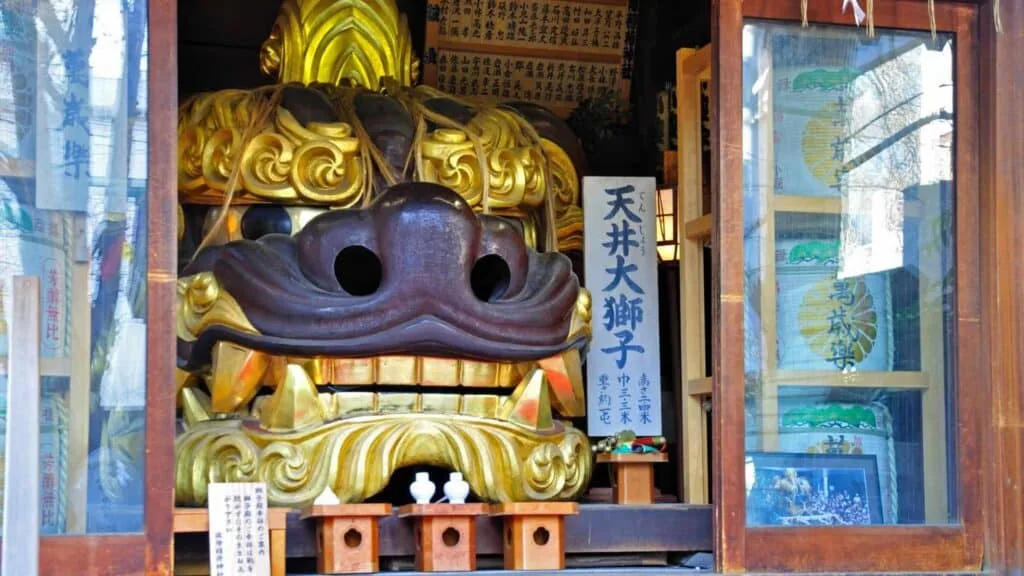
It’s tempting to reach out and touch statues or objects, especially if they look interesting or historic—but resist the urge. Most of these items are sacred and not meant to be handled. There are exceptions, like certain healing statues you’re encouraged to touch for good luck or health—but those are clearly marked. Otherwise, hands off.
Social & Public Behaviour Mistakes
Don’t cut in line

Queueing in Japan is basically sacred. People line up for trains, lifts, shops—you name it—and everyone respects the order. Cutting the queue, even by accident, is seen as seriously rude. Just look for where the line ends and join it, even if it’s long. It moves fast, and it’s all part of the unspoken social contract.
Don’t touch strangers casually
Hugs, shoulder pats, or playful nudges might feel normal where you’re from, but not here. In Japan, personal space is everything. Physical contact with people you don’t know well can feel invasive or uncomfortable.
Stick to polite bows or a friendly nod unless someone makes it super clear they’re okay with a more Western-style greeting.
Don’t litter

Bins are surprisingly hard to find in Japan, but that doesn’t mean you can just drop rubbish anywhere. People carry their trash with them until they find a proper bin—usually near convenience stores or stations. Keeping the streets clean is a shared responsibility, and it’s taken seriously.
Don’t smoke on the street

Random street smoking is a big no. Most cities have designated smoking zones, often tucked away near stations or side streets. Lighting up outside those areas isn’t just frowned upon—it can earn you a fine. Always look for smoking signs or enclosed booths before you take a puff.
Don’t jaywalk
Even if there’s no car in sight, crossing the street outside of a zebra crossing is considered reckless and rude. In Japan, people wait for the green light—even when the road is completely empty. It’s a sign of respect for rules, and yeah, people will notice if you break it.
Don’t eat or drink on local trains or buses
Snacking on a short subway ride might feel harmless, but in Japan, it’s a social slip-up. On local transport, eating and drinking is generally off-limits—people value clean, quiet spaces. The exception? Long-distance trains like the Shinkansen, where eating a bento is basically part of the experience.
Don’t be late
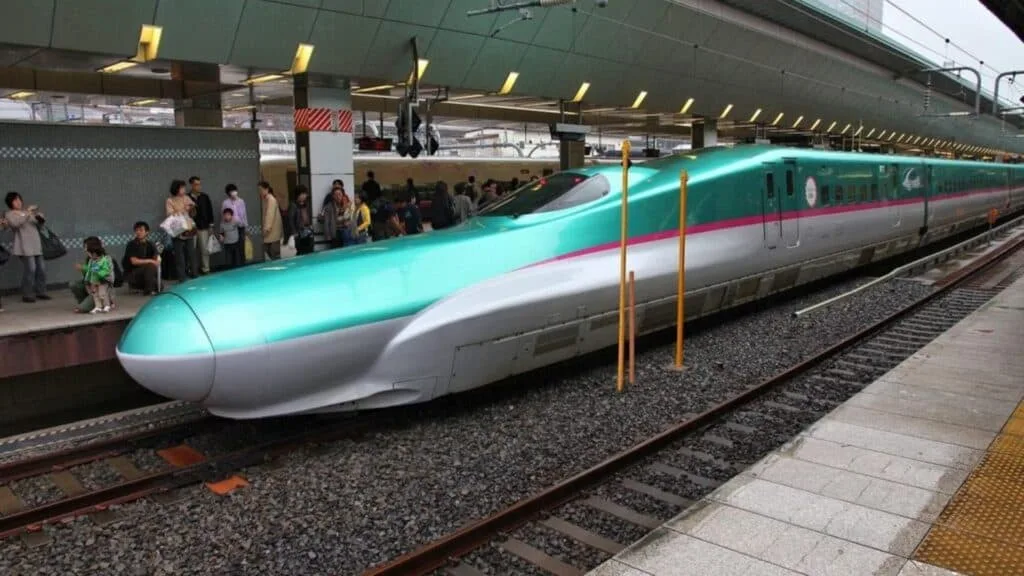
Time is taken seriously here. Being late, even by a few minutes, can come off as careless or disrespectful—especially for meetings, reservations, or group tours. Plan ahead and aim to be early if you can. It’s one of the easiest ways to show consideration.
Don’t block escalators
Escalator etiquette is a thing. In Tokyo and most of eastern Japan, people stand on the left and leave the right side clear for those in a rush. In Osaka and parts of western Japan, it’s the opposite—stand on the right, walk on the left. It sounds small, but blocking both sides can seriously annoy commuters.
Shopping & Payment Mistakes
Don’t hand money directly to the cashier
At most shops in Japan, you’ll see a small tray by the till. That’s where you’re meant to place your cash or card—not directly into the cashier’s hand.
It’s not that anyone’s being unfriendly; it’s just part of the country’s tidy and polite payment etiquette. Once you place your money in the tray, the staff will handle it and return your change the same way.
Don’t haggle or bargain

Unlike in markets or shops in some other countries, haggling isn’t a thing in Japan. Prices are fixed almost everywhere—from department stores to street stalls. Trying to negotiate the cost can come off as pushy or awkward. If something feels overpriced, it’s usually best to just move on quietly.
Don’t touch merchandise excessively
In more traditional, high-end, or boutique-style shops, handling items too much—especially without asking—can be seen as bad manners. If you’re curious about something, it’s better to politely ask the staff for help. Many stores take pride in presentation and quality, so random grabbing isn’t the move.
Don’t forget to bag your own items at self-service counters
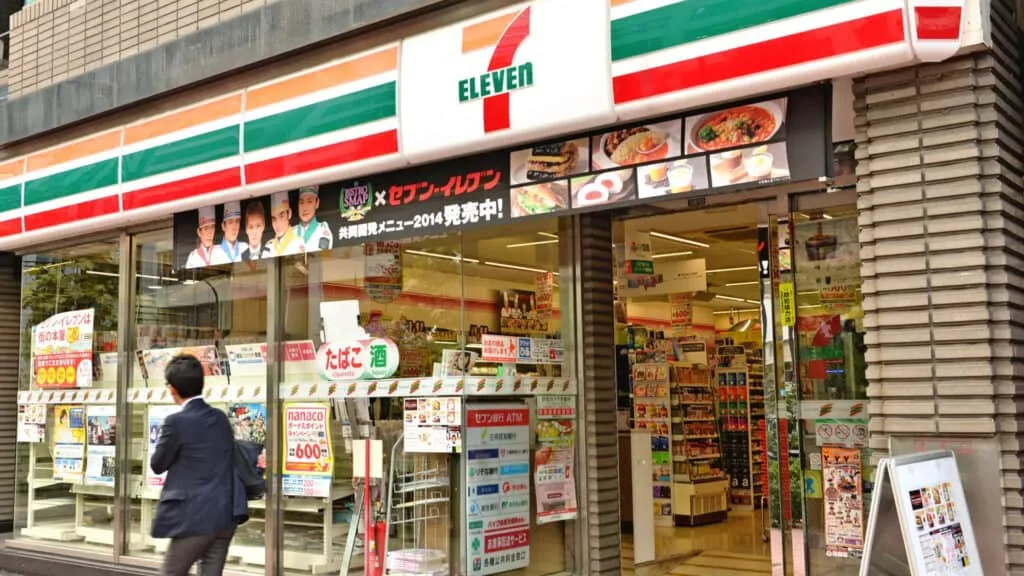
At many supermarkets or convenience stores, you’re expected to bag your own stuff. The cashier might scan everything and slide it over without saying much—that’s your cue to pack it up yourself.
If you’re unsure, just keep an eye on what others are doing or look for the designated bagging area nearby.
Laws & Restrictions to Know
Don’t do drugs
Japan has extremely strict drug laws. That includes marijuana—even a tiny amount can get you arrested, detained, and deported. There’s zero tolerance here, and “it’s legal in my country” won’t fly. Just don’t risk it. Even prescription meds like Adderall are banned, so double-check what you’re bringing in.
Don’t drink in restricted public areas

While public drinking isn’t banned everywhere, it’s not a free-for-all. During festivals or in busy public parks, you might see signs that clearly say “no drinking.” If you ignore them, you could get fined or asked to leave. When in doubt, look for signs or stick to designated areas like event zones or beer gardens.
Don’t carry weapons
Carrying any kind of weapon—including pocket knives, pepper spray, or anything that could be considered threatening—is a legal issue in Japan. Even if it’s something you usually carry for safety, it could get confiscated or land you in legal trouble. Best to leave anything questionable at home.
Don’t use drones without a permit
Flying a drone in Japan isn’t as easy as just launching one into the sky. There are tons of rules, especially around crowded areas, historical sites, or city centres. You usually need a permit, and in some places, drones are completely banned. Using one illegally can result in big fines or worse.
Don’t ride a bicycle while holding an umbrella or phone
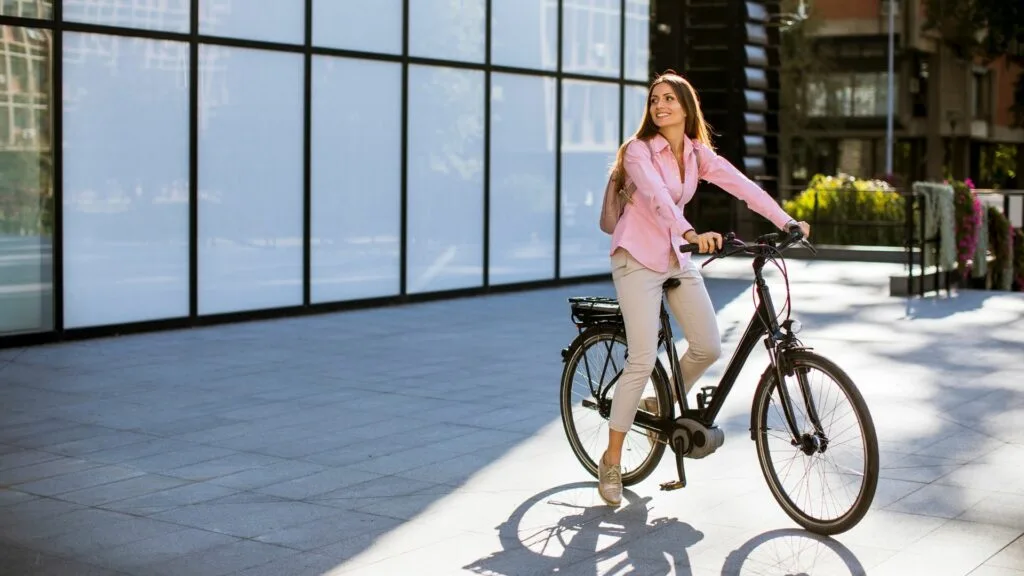
Riding one-handed with your phone or umbrella might seem like a casual move, but it’s actually illegal in Japan. It’s considered dangerous and irresponsible, and you can get stopped or fined for it. If it’s raining, get a bike umbrella mount—or just walk.
Don’t ride double on a bicycle
Riding with two people on one bike (like someone standing on the back or sitting on the handlebars) is not allowed. The only exception is for a child in a proper, approved child seat. Even if it seems harmless, the law’s pretty clear—and you might get pulled over.
Technology & Photography Mistakes
Don’t take photos of people without asking
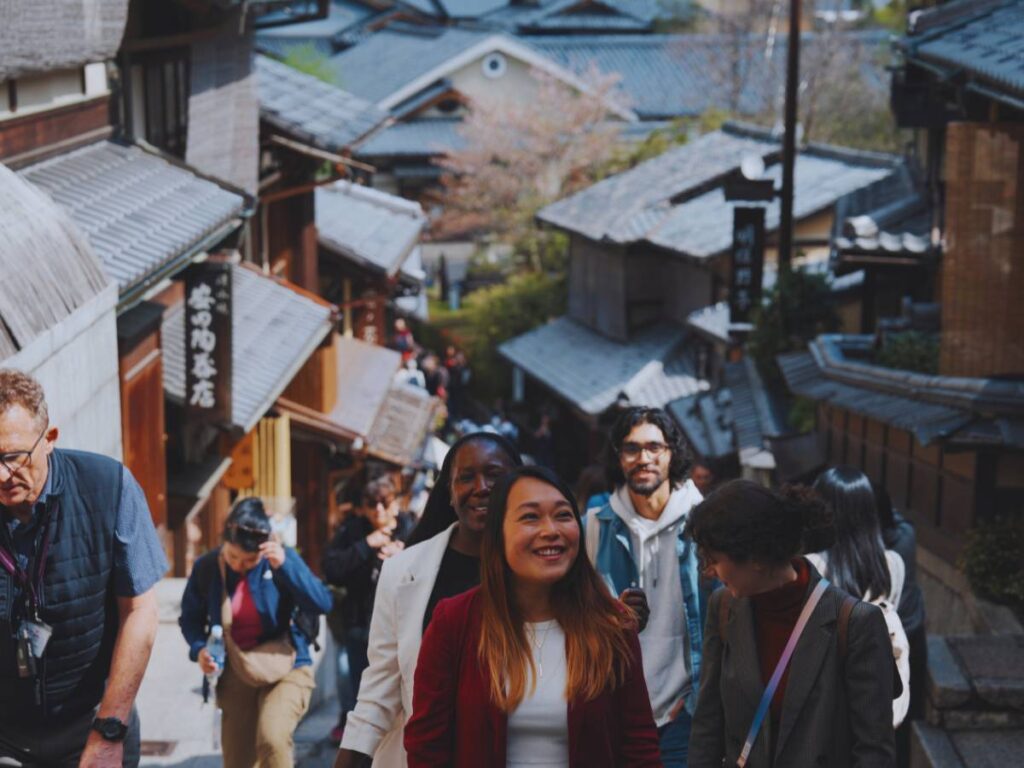
Snapping pics of people without permission—especially geisha, children, or locals in quieter rural areas—is a quick way to come off as disrespectful.
Geisha in particular aren’t tourist attractions; they’re professionals, and many are tired of being followed or photographed like zoo animals. Always ask before taking someone’s photo, and if they say no, respect that and move on.
Don’t take photos in “no photography” zones (Duh!)
You’ll often see signs that say “No Photos” in temples, shrines, museums, certain shops, or exhibitions—and they mean it. These rules are usually there to protect sacred spaces, preserve delicate items, or respect others’ privacy. Ignoring them just makes tourists look careless.
Don’t Do These Things in Japan—Stay Smart, Stay Respectful

Japan isn’t just an amazing place to visit—it’s a country built on thoughtfulness, subtlety, and social awareness. That means some of the “don’ts” might seem small, but they go a long way in showing respect for the culture and people around you. Following these unspoken rules isn’t about being perfect—it’s about being open, observant, and just a little more mindful than usual.
By avoiding these common mistakes, you’re not only keeping things smooth for yourself, but also showing appreciation for the country you’re exploring. So enjoy the vending machines, the temples, the weird KitKat flavours—and do it all with a bit of cultural know-how. It makes the experience better for everyone.
And if you ever need some personalised assistance for your travel, we are always here to help you with planning, day tours, group trips, and cultural experiences!







